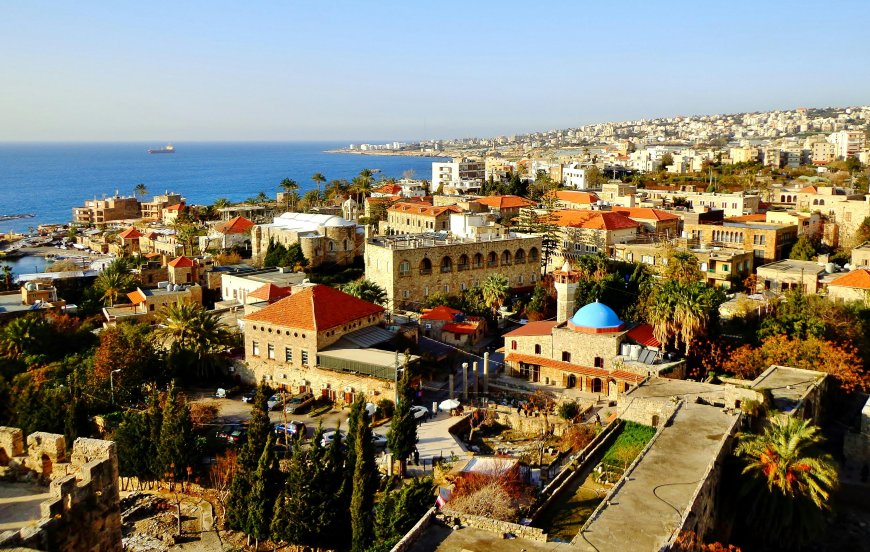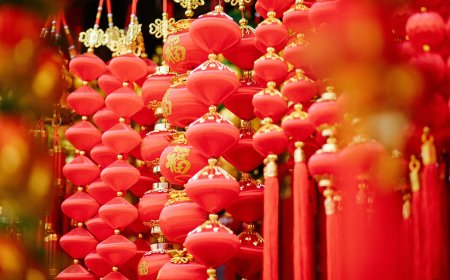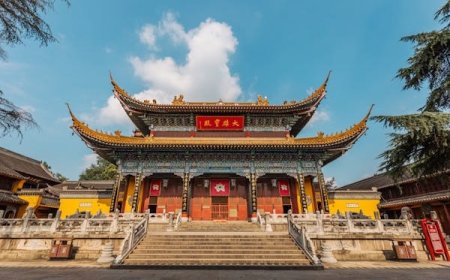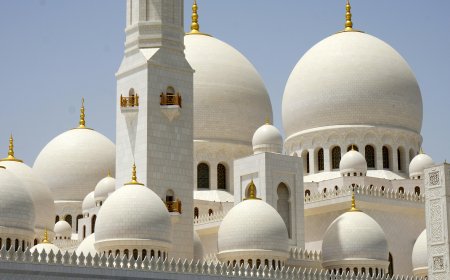Key Features of Traditional Architecture in the Arab World
Traditional Arabic architecture is characterized by its regional diversity and expression of the cultural identity of the areas where it originated. Its features are evident through the use of simple architectural elements such as domes, arches, and intricate geometric and vegetal motifs. Additionally, it is renowned for the use of local materials like clay, stone, and wood in building constructions, with a focus on intricate decorative details and traditional handicrafts such as carving, sewing, and embroidery. This architecture reflects a rich heritage of craftsmanship and innovation in architectural design, embodying the spirit of aesthetics and functionality in traditional Arab culture.

Traditional Arabic architecture is characterized by its regional diversity and expression of the cultural identity of the areas where it originated. Its features are evident through the use of simple architectural elements such as domes, arches, and intricate geometric and vegetal motifs. Additionally, it is renowned for the use of local materials like clay, stone, and wood in building constructions, with a focus on intricate decorative details and traditional handicrafts such as carving, sewing, and embroidery. This architecture reflects a rich heritage of craftsmanship and innovation in architectural design, embodying the spirit of aesthetics and functionality in traditional Arab culture.
Key Features of Traditional Architecture in the Arab World
The history and evolution of traditional Arabic architecture reflect a rich and diverse narrative that combines cultural influences and architectural techniques across ages. Originating in ancient times in the Middle East and North Africa region, this type of architecture evolved over time with diverse influences from ancient civilizations such as the Pharaohs, Romans, and Byzantines.
Traditional Arabic architecture was greatly influenced by Islamic culture and its architectural trends, flourishing during the golden Islamic ages such as the Abbasid, Umayyad, and Fatimid eras. During these periods, Islamic cities witnessed tremendous architectural developments, with the construction of famous mosques, schools, and palaces reflecting innovation and grandeur in design and construction.
Characterized by key elements such as domes, arches, intricate geometric and vegetal motifs, and the use of local materials like clay, stone, and wood, traditional Arabic architecture embodied a unique blend of elegance and functionality. The dome symbolized luxury and grandeur, while the arch represented elegance and architectural sophistication. Geometric and vegetal ornaments added a distinctive aesthetic touch to the buildings.
Over time and with changing eras, traditional Arabic architecture experienced architectural transformations and new influences, yet it still maintains its beauty and fundamental principles. In modern times, traditional Arabic architecture serves as a source of inspiration for many architects and designers, remaining a testament to innovation and creativity in building design.
The charm of ornaments and details in traditional Arabic architecture
The enchantment of ornaments and details in traditional Arabic architecture represents an important essence in expressing the unique cultural and aesthetic identity that distinguishes this type of architecture. Ornaments and details are integral parts of the urban identity of traditional Arab cities, expressing a rich heritage and advanced techniques in architectural design.
Ornaments in traditional Arabic architecture are characterized by their immense diversity and artistic splendor, encompassing a wide range of geometric and botanical shapes. These ornaments feature intricate details and vibrant colors that add beauty and radiance to the buildings. Geometric motifs like complex patterns and serene geometric designs are essential parts of urban design, while botanical ornaments such as trees, flowers, and other botanical shapes reflect a deep connection to nature and appreciation of natural beauty.
Ornaments and details in traditional Arabic architecture blend elegantly and harmoniously with the structure of buildings, intertwining with arches, columns, and domes in a unique way that distinguishes this architectural style. They express the artistic taste of architects and craftsmen, highlighting the craftsmanship and manual skill that characterize traditional Arabic architecture.
Ornaments and details in traditional Arabic architecture represent essential aspects of beauty, charm, and creativity in architectural design, embodying a rich cultural heritage and advanced techniques in the art of traditional Arabic architecture.
The use of local materials in traditional Arabic architecture
The use of local materials in traditional Arabic architecture is considered an integral part of the heritage of this ancient architectural style. Traditional Arabic architecture is characterized by reliance on locally available resources in building construction, reflecting a strong emphasis on sustainability and harmony with the surrounding environment.
The local materials used in traditional Arabic architecture include a diverse range of natural materials, such as clay, stone, and wood. Clay is widely used in building walls and roofs, being shaped and dried to create sturdy and durable structures. Stone is utilized in constructing foundations, columns, and decorative motifs, with various types of available stone used in each region. Wood is used in building doors, windows, and furniture, adding a touch of warmth and beauty to the buildings.
The use of local materials brings several advantages, including low cost, abundant availability, and integration with the surrounding environment. Additionally, using these materials contributes to giving traditional Arabic architecture a local character and authenticity, helping preserve the architectural heritage of the region.
In summary, the use of local materials in traditional Arabic architecture is an essential element that reflects the local spirit and close connection with nature and local culture, making it distinctive and unique in the world of traditional architecture.
The Aesthetic of the Dome in Traditional Arabic Architecture
The beauty of the dome in traditional Arabic architecture represents an essential and distinctive element of this magnificent architectural style. The dome is considered a symbol of luxury and elegance in traditional Arabic architecture, adding exceptional beauty to the buildings adorned with it.
Domes in traditional Arabic architecture are characterized by several aspects that contribute to their aesthetic appeal. Firstly, their elegant circular shape represents perfect balance and harmony with the rest of the building structure. Additionally, the height and width of the dome create a sense of luxury and grandeur, proudly drawing attention.
Domes in traditional Arabic architecture are adorned with intricate geometric and vegetal ornaments, reflecting the skill of craftsmen and artists in designing and executing these artistic works. The decorations range from simple geometric patterns to elaborate Eastern motifs, adding unique and distinctive aesthetics to the domes.
In addition to the ornaments, domes in traditional Arabic architecture rely on the use of local materials such as clay, stone, or wood, further enhancing their beauty and adding a natural and warm touch to the building.
The beauty of the dome in traditional Arabic architecture reflects sophistication, luxury, and precision in design, adding a touch of elegance and charm to the buildings, making them an integral part of the unique allure of this architectural style.
The arch symbolizes elegance in traditional Arabic architecture
The arch is considered a symbol of elegance and beauty in traditional Arabic architecture, representing a unique and attractive architectural element that adds a special charm to the buildings adorned with it. The arch is one of the main elements in traditional Arabic architecture and is widely seen in the construction of mosques, palaces, and traditional Arabic baths.
The arch in traditional Arabic architecture is characterized by several aspects that contribute to making it a symbol of elegance and beauty. Firstly, its attractive curved shape reflects perfect harmony and balance between the different parts of the building. The arch possesses a unique allure that makes it a focal point of visual attraction and can be a centerpiece of prominent architectural designs.
In addition to its distinctive shape, the arch in traditional Arabic architecture is distinguished by its splendid decorations and intricate details that enhance its beauty and charm. Geometric and vegetal motifs are intricately carved on the surface of the arch using refined artistic techniques, adding a touch of artistic elegance that reflects the craftsmanship and artistic skill of craftsmen and artists.
Colors are widely used in decorating the arch, with colorful motifs and vibrant hues seen to add sparkle and radiance, making the arch stand out even more and enhancing its aesthetic appeal.
The arch is considered a symbol of elegance and beauty in traditional Arabic architecture, combining its distinctive shape, artistic decorations, and attractive colors to add a special charm to the buildings adorned with it.
Regional Influences on Traditional Arabic Architecture
Regional influences on traditional Arabic architecture reflect the cultural and historical diversity in different regions of the Arab world. Each region is characterized by its unique architectural style that reflects its history and distinct culture, yet they also share some common elements that distinguish traditional Arabic architecture.
1. Northern Regions:
In the northern regions of the Arab world such as Morocco, Tunisia, and Algeria, the architectural character is marked by Berber and Andalusian influences. Architecture appears in forms like the Moroccan Arab palaces distinguished by ornate arches and luxurious Andalusian decorations.
2. Eastern Regions:
In the eastern regions such as Egypt, Syria, and Iraq, architecture is influenced by ancient civilizations like the Pharaohs, Christianity, and Islam. Architecture in these areas is characterized by pyramids, temples, mosques, and palaces reflecting the rich heritage of these regions.
3. Arabian Peninsula:
In the Arabian Peninsula regions such as Saudi Arabia, the Emirates, and Qatar, architecture is influenced by the desert environment and Bedouin culture. Architecture in these areas is characterized by traditional houses built from mud and stone, along with classical Islamic architecture.
4. Northeastern Regions:
In the northeastern regions such as Lebanon, Syria, and Palestine, the influence of traditional Ottoman and Palestinian architecture is evident, characterized by arches, vertical columns, and exquisite artistic decorations.
The shape and style of traditional Arabic architecture are influenced by the history, culture, and terrain of each region, creating astonishing diversity and reflecting the diverse cultural identity of the Arab world.
Stained Glass and Lighting in Traditional Arabic Architecture
In traditional Arabic architecture, stained glass plays a prominent role in enhancing the beauty of buildings and adding a touch of luxury and elegance. Stained glass is widely used in windows, transoms, and lamps, allowing light to enter the interior in a delightful and beautiful manner.
The technique used in stained glass is one of the traditional arts that flourished during the Islamic eras, involving coloring glass with different hues and assembling them into specific patterns to create captivating visual effects. Vibrant colors such as blue, green, red, and yellow are used to create stunning effects when the glass is exposed to sunlight or artificial lighting.
Stained glass in traditional Arabic architecture is applied in the form of intricate decorative panels that express the culture and local heritage. These colorful glass panels can be seen in windows and transoms of mosques, schools, and palaces, adding a sense of beauty and sophistication to the buildings.
In addition to aesthetics, stained glass contributes to lighting the interior in a unique and delightful way. The effect of colored light creates lively patterns and soft shadows in the rooms, enhancing the overall ambiance and making the space feel warmer and more magnificent.
In this way, stained glass and lighting in traditional Arabic architecture are essential elements in highlighting the beauty of buildings and adding a touch of authenticity and luxury to architectural designs in the traditional Arab world.
Summary
Traditional Arab architecture represents a rich and diverse heritage in the Arab world, with its unique features evident in the designs of mosques, palaces, and traditional houses. This architecture is characterized by the use of local materials such as clay, stone, and wood, and it employs traditional building techniques like domes, arches, and intricate geometric and floral decorations. Stained glass and colored interior lighting are essential elements of the beauty of traditional Arab architecture, reflecting its unique identity and cultural diversity across Arab regions. Thanks to these elements, traditional Arab architecture remains a source of inspiration and admiration for many, maintaining its allure and splendor throughout the ages.
Sources
1. Arabian Traditional Architecture A Web Resource - A website providing comprehensive information and images about traditional architecture in the Arab world.
2. Islamic Architecture - A book that reviews Islamic architecture in general with a special focus on traditional architecture in the Arab world.
3. Traditional Architecture in the Arab Region - An article outlining the features and styles of traditional architecture in the Arab world.
4. Arabic Architecture History & Characteristics - An article that reviews the history and characteristics of traditional Arabic architecture.
What's Your Reaction?




































































































































































